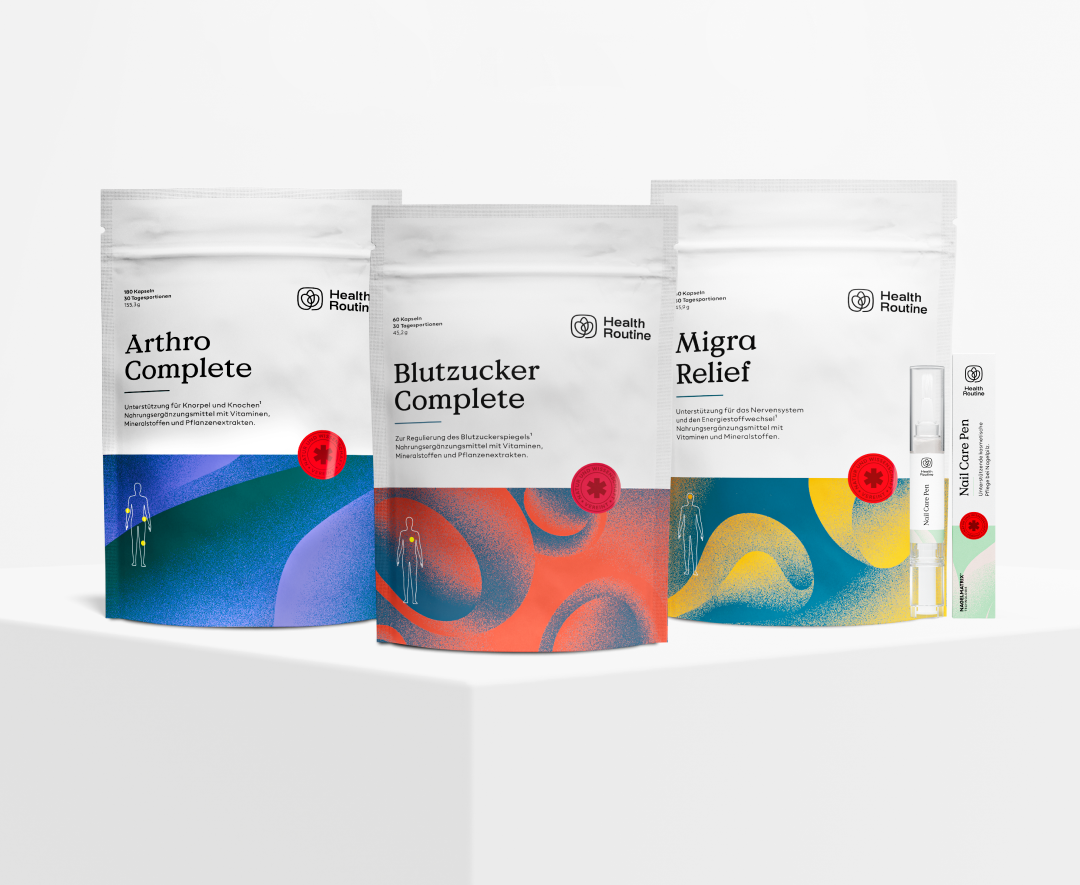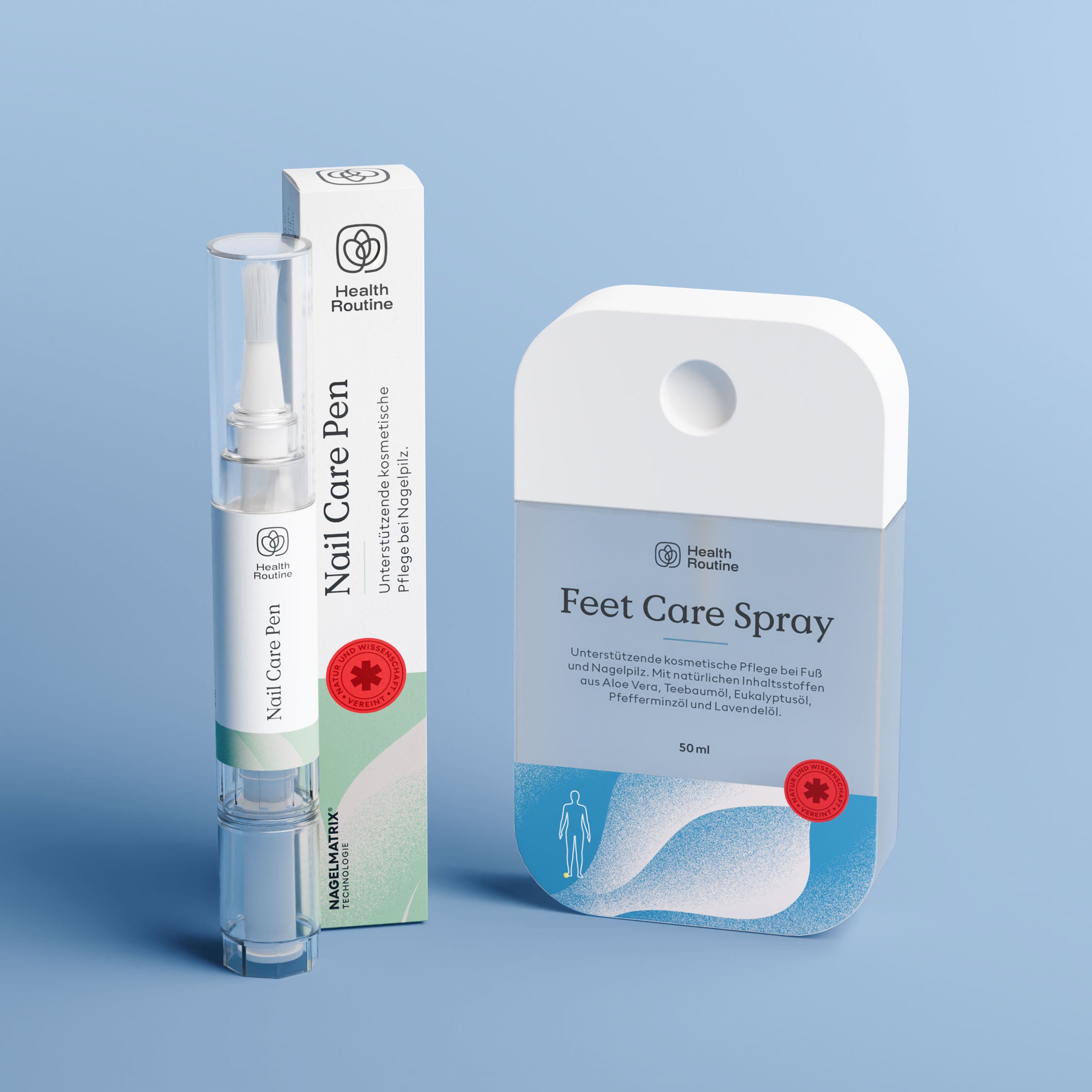Good nail care is more than just an aesthetic luxury, it is also a sign of self-care and the key to well-groomed and resilient nails.
In this guide from Health Routine we look at nail files and the importance of choosing the right grit.
Choosing the right nail file can make the difference between a simple manicure result and flawless, healthy nails.
With the right knowledge and careful selection, you can optimize your nail care and give your nails the care they deserve.
Grit Number: Your Guide to the Perfect Grit of Your Nail File
Before we delve deeper into the world of nail care, it's important to understand the basics. What is grit?
The grit number indicates how fine or coarse the grain of a nail file is – the higher the number, the finer the file.
The grit number can also be described as the "fineness" of the nail file. In this guide, you will learn all about the meaning of the different nail file grits and how to find the ideal file for your individual needs.
| Grit number (grain size) | Nail file structure |
| 80 Grit | Coarse nail file |
| 180 grit | Medium-coarse file |
| 240 grit | File with fine grain |
| 600 grit | Very fine nail file |
By understanding the grit number and what it means, you can make informed decisions and select the right nail file grit for your individual needs.
Each grain serves a specific purpose
When it comes to nail care, it is beneficial to know which nail file and which grit is best suited.
To help you understand the differences between nail file grits, we have created a detailed overview that shows you how each grit can be used specifically to care for your fingernails.
| Grain size (grit number) | use |
| 80 grit | It is ideal for quickly trimming artificial nails. However, it should be used with caution to avoid damaging natural nails. |
| 180 grit | Ideal for shaping and filing natural nails without damaging the structure. |
| 240 grit | Perfect for gently filing and polishing natural nails to give them a natural shine. |
| 600 grit | Used to polish acrylic nails to give them a smooth and shiny finish. |
When is a glass file best used?
If you are wondering: “ Which nail file is the right choice for brittle nails? ” then the answer is clear: a glass file.
With their fine grain and durability, glass files are particularly gentle on nails, prevent tearing and splintering and thus promote the long-term health of your nails.
Additionally, they are easy to clean and can be used multiple times, making them a sustainable choice for your nail care routine.
Discover the microfine glass file from Health Routine now - your key to gentle and effective nail care! This durable file is specially designed to gently shape even sensitive and brittle nails, remove protruding nail ends and seal the nail, thus ensuring splinter protection.
With its sustainable design and easy application, it is the ideal addition to your nail care routine.
Let your nails shine with new splendor and enjoy the feeling of well-groomed hands – try the Health Routine glass file now!
File or buffer: what’s the difference?
In the multifaceted world of nail care, both the file and the buffer file are indispensable tools. But what does buffering mean? And what is a buffer for nails?
-
Nail file: A nail file is used to trim and shape nails, with different grits being used for different needs.
- Buffer: A buffer, on the other hand, is used to smooth the surface of the nail and give it a natural shine.
The main difference lies in their function: while the file modifies the shape and length of the nail, the buffer polishes the nail and thus improves the surface structure and appearance of the nail.
The shape of the file: why it is crucial
The shape of the nail file also plays an important role in nail care, as it significantly influences the handling and the end result.
Here's how different file shapes can impact your nail care routine.
-
Trapezoidal file: This file with its unique shape allows precise control when filing, especially on the edges and corners of the nails to achieve an even and symmetrical nail shape.
-
Straight File: Ideal for artificial nails, this file allows for quick and efficient trimming and shaping, especially for square nail shapes.
- Curved file: This file adapts to the natural curves of your nails, allowing for gentle and controlled filing to achieve a natural and harmonious nail shape.
What types of nail files are there?
To give you a comprehensive overview, we will introduce you to the different types of nail files:
-
Glass files:
Glass files are known for their gentle nature and are particularly suitable for brittle and sensitive nails. They have a fine grain that prevents nails from cracking and splitting. They are also easy to clean and very durable, making them a sustainable option for nail care.
-
Metal files:
Metal files are sturdy and durable, but are more suitable for thick and artificial nails. They can be quite coarse, so are not the best choice for thin or brittle nails. However, their durability and ease of cleaning make them a popular tool for many.
-
Paper files (sandpaper files):
Paper files are usually inexpensive and available in different grits. They consist of a carrier material, usually paper, and an abrasive grain applied to it. They are flexible and are good for shaping nails, but they wear out faster than glass or metal files.
-
Ceramic files:
Ceramic files offer gentle care and are particularly suitable for thin and sensitive nails. They are easy to handle and clean, but can break easily if dropped. Their fine grain makes them ideal for a smooth finish.
You should pay attention to these quality features
When purchasing a nail file, there are a few quality features that are crucial to ensure you get a product that is both effective and long-lasting.
Here are some aspects to look out for:
Which grain size variations are best for nail files?
Choosing the right grain size (grit number) is a crucial factor for successful nail care.
A coarse grit size is great for trimming and shaping artificial nails , while a finer grit size is ideal for polishing and smoothing the surface of natural nails .
The adhesive layer of the abrasive grain: A key element in nail files
The quality of the adhesive layer of the abrasive grain on a nail file is a crucial factor in its longevity and effectiveness. A good adhesive layer ensures that the abrasive grain adheres firmly to the file, which enables even and effective filing.
To ensure optimal use and longevity, make sure that the adhesive layer is evenly distributed and has no loose grains.
The role of sandpaper as a carrier material for the grain
The sandpaper serves as a carrier material for the abrasive grain and plays an essential role in determining the quality of a nail file.
High-quality sandpaper offers an even grain distribution and a firm adhesion of the grain , which enables precise and effective filing.
For best performance, make sure the sandpaper is firmly attached to the file without wrinkles or cracks.
Durability and softness: The advantages of glass files
Glass files are known for their durability and gentle action on nails . Unlike traditional files that use abrasive grain and backing paper or a backing material, glass files do not wear out and retain their filing effect over a long period of time.
The fine, even surface structure of the glass file not only files the nails gently, but also seals them at the same time to prevent splintering and tearing.
Easy cleaning and hygiene: Why glass files are so convincing
Another advantage of glass files is their ease of cleaning. They can be rinsed under running water and even sterilized if necessary, making them a hygienic choice for nail care.
The smooth surface of the glass file also prevents nail debris and bacteria from sticking, which reduces the risk of nail infections.
The ideal choice for sensitive and brittle nails
Glass files are particularly suitable for people with sensitive or brittle nails.
The gentle filing action prevents additional stress and damage to the nail , while the sealing of the nail edge helps to maintain the structure and health of the nails.
For these reasons, we at Health Routine have decided to present a high-quality microfine glass file in our range.
Because with a glass file you are making a conscious choice for the care and protection of your nails.
How to care for your nail file properly
Proper care of a nail file is crucial to ensure its longevity and to enable hygienic nail care.
Here are some tips for caring for different types of nail files:
-
Glass File: Glass files can be cleaned with soap and water; dry them thoroughly to preserve their longevity.
-
Metal file: Metal files can be cleaned with a brush and disinfectant to remove all nail residue and ensure hygienic use.
-
Paper file: These disposable files should be replaced after a few uses to ensure optimal hygiene.
-
Ceramic file: Ceramic files should be cleaned carefully with a soft brush and mild soap.
Be careful not to drop them as they may break. After cleaning, they should be allowed to air dry completely to maintain their quality and longevity.
Note : Finally, it is important to disinfect all types of nail files regularly to prevent the spread of bacteria and infections.
Use a suitable disinfectant to keep your files clean.
Conclusion
Careful nail care begins with the selection of the ideal tools and the in-depth knowledge of their use.
Every detail, from the grit to the shape of the file, is crucial to making nails healthy and aesthetically pleasing.
With the right knowledge and quality products, such as the microfine glass file from Health Routine, you create the basis for an effective care routine. This will not only improve the appearance but also the vitality of your nails in the long term.
Decide today to take conscious care of your nails and experience how your nails can blossom through targeted care and attention.
By the way, we have many other selected products for feet and hands that promote nail health and can help get your nails in top shape.
FAQ
When do files need to be replaced?
Files should be replaced as soon as they show signs of wear, such as a worn grit or when they no longer file effectively. Paper files require more frequent replacement as they are not nearly as durable as glass files.
Which grain size is the coarsest?
The coarsest grit for nail files is usually 80 grit. This grit is mainly used for shortening and shaping artificial nails because it removes a lot of material very quickly.
What do you have to pay attention to when filing?
When filing, it is important to use smooth, controlled movements to avoid splitting or tearing the nails. Be sure to move the file in one direction rather than sawing back and forth to achieve a smooth, even edge.
🌿 Discover more guides from Health Routine now:
- Healthy nails: Tips and tricks for strong and shiny nails
- Nail changes: Recognize and understand
- How to file nails properly: tips and tricks for beginners & professionals
Your medical notice
Our products are not intended to diagnose, treat, cure, or prevent any disease. The information provided in this article is for informational purposes only and is not intended to be a substitute for advice from your doctor or other healthcare professional.
In addition, our products are not intended to be a substitute for medication or other treatment prescribed by your doctor or health care provider. Regardless of the duty of care applied, no liability or warranty is assumed for the
- Accuracy,
- topicality,
- completeness
- and availability of the information provided.
No legal claims can be made for damages potentially resulting from the use of the corresponding information. Liability claims of any kind are excluded.






